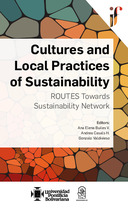Sustainable development as redirected evolution. Insights from innovation studies and ecological humanities
| dc.contributor.author | Kemp, René | |
| dc.contributor.author | Turkeli, Serdar | |
| dc.date.accessioned | 2021-12-02T15:19:32Z | |
| dc.date.available | 2021-12-02T15:19:32Z | |
| dc.date.issued | 2021 | |
| dc.identifier.isbn | 978-958-764-999-4 | |
| dc.identifier.uri | http://hdl.handle.net/20.500.11912/9748 | |
| dc.description | 30 páginas | spa |
| dc.description.abstract | In this chapter, we describe and discuss similarities and differences between human evolutions with natural evolution. This is done after a bibliometric study of the use of eight concepts from ecology in the literature on innovation: evolution, eco-system, variation, retention and selection, niche, bio-mimicry, co-evolution, and the helix metaphor for collaborative arrangements between business, government, academia and civil society organisations. We argue that sustainable development should be understood as redirected evolution: getting closer to sustainable development requires a multitude of changes, each of which is subject to quasi-evolutionary processes of variation, selection, retention. | spa |
| dc.format.mimetype | application/pdf | |
| dc.language.iso | spa | |
| dc.publisher | Universidad Pontificia Bolivariana | spa |
| dc.rights | Attribution-NonCommercial-NoDerivatives 4.0 International | * |
| dc.rights.uri | http://creativecommons.org/licenses/by-nc-nd/4.0/ | * |
| dc.subject | Evolution | spa |
| dc.subject | Innovation | spa |
| dc.subject | Ecological Humanities | spa |
| dc.subject | Sustainability | spa |
| dc.title | Sustainable development as redirected evolution. Insights from innovation studies and ecological humanities | spa |
| dc.title.alternative | Cultures and Local Practices of Sustainability. ROUTES Towards Sustainability Network | spa |
| dc.type | bookPart | spa |
| dc.description.sectional | Medellín | spa |
Files in this item
This item appears in the following Collection(s)
-
Capítulos de libro [747]


